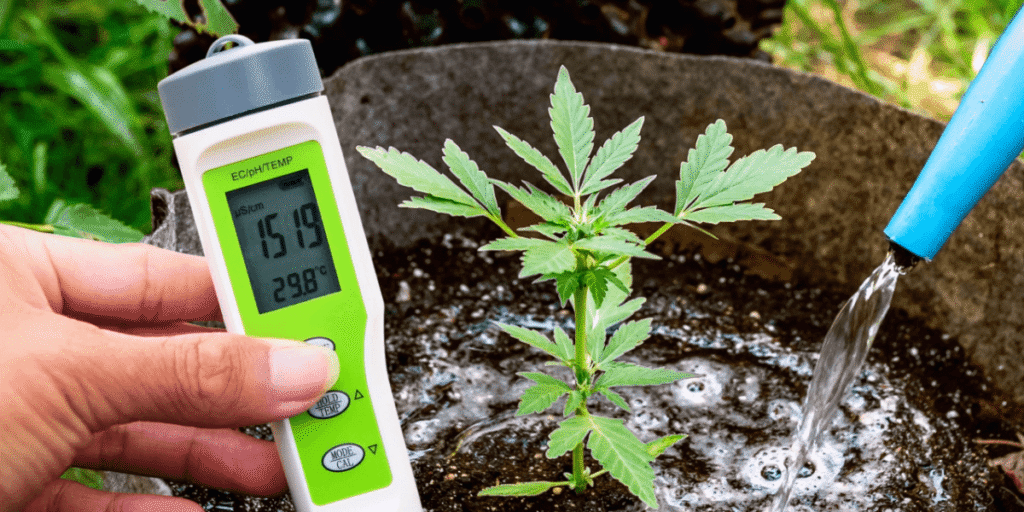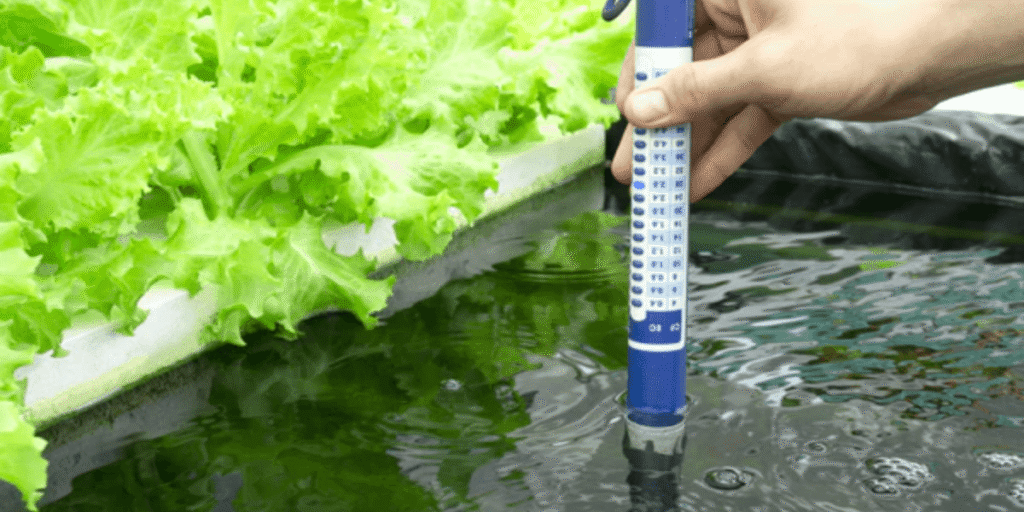pH and EC levels in hydroponics are really what make the difference between a plant that just survives or one that truly thrives. It’s not just about picking the right crops or having a fancy setup. The way you manage these two water parameters is what helps your plants actually take in nutrients, grow faster, and stay strong and vibrant.
In this guide, we’ll walk through pH and EC in a friendly, easy-to-follow way. You’ll learn what they really mean, why they matter so much, and how to check and adjust them without stress. Once you get into the rhythm, you’ll start noticing greener leaves, healthier roots, and more productive plants and that feeling of watching your care actually pay off is seriously addictive.
How to Maintain pH and EC in Hydroponics
Let’s talk about EC and why it’s so important for your hydroponic water quality. It might sound a bit technical at first, but think of it like this: EC is just a measure of how “salty” your nutrient solution is. And don’t worry, it’s not table salt we’re talking about. These are the minerals and nutrients your plants need for healthy hydroponic growth and strong root health. The more nutrients dissolved in your water, the higher the EC reading will be.
So why does this matter? Imagine setting up a buffet for your plants. If the table is overloaded, it’s overwhelming, just like when EC is too high. Plants can struggle, leaf tips may burn, and their ability to absorb nutrients slows down. On the flip side, if the table is nearly empty and EC is too low, your plants won’t get enough to eat. They grow weak, pale, and definitely won’t reach their full hydroponic crop yield potential.
Finding the right EC is like being the perfect host. You’re giving your plants just the right amount of nourishment so they stay happy, strong, and productive. Keeping EC balanced is also part of smart water parameter management. Once you get the hang of it, you’ll notice healthier roots, better plant nutrient absorption, and lush, thriving plants. Honestly, it’s one of those little secrets that makes hydroponics so rewarding, and it really shows in your hydroponic plant health over time.
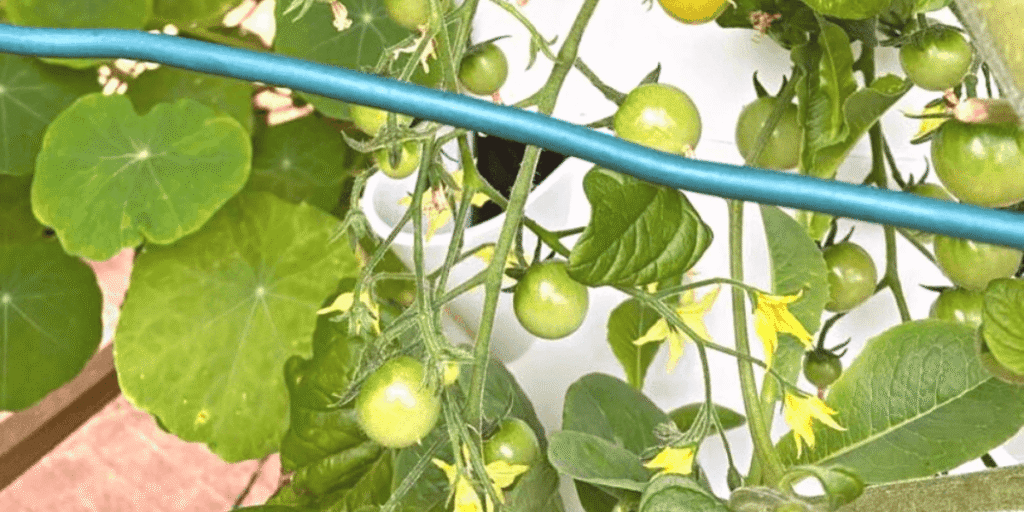
Why EC Levels Matter and How They Affect Hydroponic Growth
Getting the EC right is really like finding the perfect recipe for your hydroponic water quality. Too much seasoning and the dish is ruined, too little and it tastes bland. Plants respond in the same way.
When the EC is too high, they end up taking in more nutrients from your nutrient solution than they can actually handle. You might notice leaf tips turning brown, slower growth, or flowers and fruits not developing properly. It’s almost like their roots are overwhelmed and struggling to absorb nutrients efficiently, which affects overall hydroponic plant health.
When the EC is too low, it’s the opposite problem. Plants look hungry. Leaves lose that fresh green color, growth slows down, and flowers or fruits may never really form. Their root health suffers, and plant nutrient absorption is far from optimal, which directly impacts hydroponic crop yield.
The magic happens when you keep EC in that sweet spot. Plants grow steadily, leaves stay lush and vibrant, and you’ll see better hydroponic growth and higher crop yield. Paying attention to EC is also a key part of water parameter management and hydroponic system maintenance. Once you experience how much difference it makes, checking EC will become one of the easiest and most rewarding habits in hydroponics. It even helps your dissolved oxygen in hydroponics stay balanced, keeping roots happy and healthy.
Understanding pH in Hydroponics and Its Role in Plant Nutrient Absorption
PH is really just a way of describing how acidic or alkaline your nutrient solution is. The scale runs from zero to fourteen, with seven right in the middle as neutral. Anything below seven is acidic and anything above seven is alkaline.
Think of pH as the personality of your hydroponic water. If it’s too acidic, some nutrients in your nutrient solution hide away and plants can’t absorb them. If it’s too alkaline, other nutrients suddenly become unavailable, and your plants start missing out on the essentials for healthy hydroponic growth. Even if the water is full of nutrients, incorrect pH can make it feel like the pantry doors are locked.
When pH is in the sweet spot, nutrients flow smoothly and your plants can take exactly what they need. You’ll notice stronger roots, greener leaves, and steady hydroponic growth. Paying attention to pH is also an important part of water parameter management and hydroponic system maintenance. Balanced pH supports optimal plant nutrient absorption, improves hydroponic crop yield, and keeps your dissolved oxygen in hydroponics at a healthy level. Once you start managing it consistently, you’ll see your hydroponic plant health improve almost immediately.
Why Maintaining pH is Key for Hydroponic Plant Health
pH might seem like a small detail at first, but it quietly decides how well your plants can take in nutrients from your hydroponic water. Even if your nutrient solution is perfect, the wrong pH can lock those nutrients away. It’s like setting a table full of food but forgetting to give your plants a fork, they’re surrounded by what they need, but they just can’t reach it.
When the pH drifts too high, some nutrients like iron become almost invisible to the roots. That’s when you start noticing pale yellow leaves at the top, a classic sign that plant nutrient absorption is being blocked. On the flip side, if the pH dips too low, phosphorus becomes harder to absorb, slowing root growth and making flowers weaker. It’s like your plants are running a marathon without enough energy to finish.
Keeping pH stable is a bit like keeping the kitchen open for your plants all day. With the right range, nutrients in your solution are fully available, root health stays strong, and hydroponic growth feels effortless. Watching your pH closely also supports water parameter management, dissolved oxygen in hydroponics, and overall hydroponic system maintenance. Once you make this a habit, you’ll notice healthier roots, more vibrant leaves, and better hydroponic crop yield. It’s one of those little tricks that makes hydroponic plant health feel truly magical.
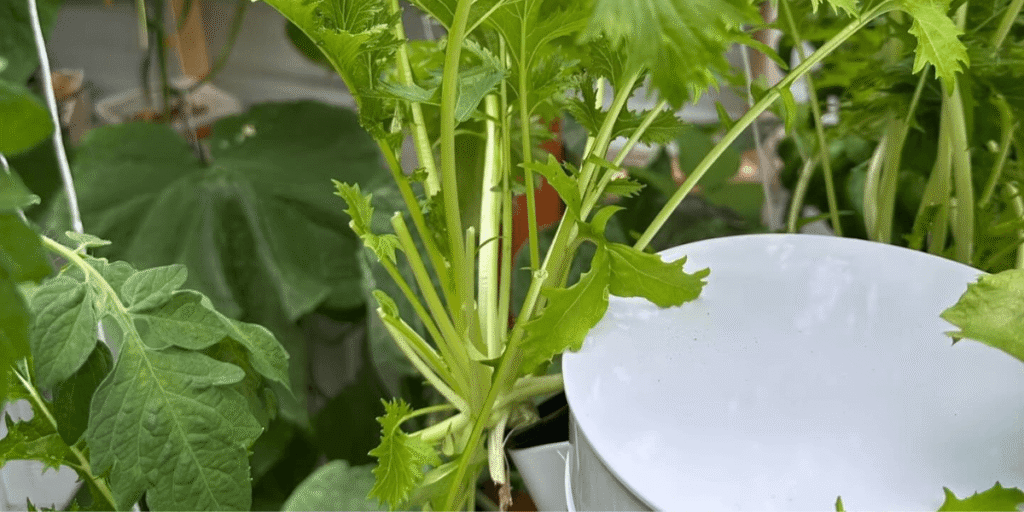
Step-by-Step Guide to Monitoring pH and EC in Hydroponics
Checking EC and pH doesn’t have to feel like a complicated science experiment. Once you get the hang of it, it actually becomes a simple routine that helps you stay connected to your plants and the overall hydroponic water quality. Most growers rely on a couple of handy tools: an EC meter to see how concentrated your nutrient solution is, and a pH meter or test kit to check whether the water is leaning acidic or alkaline.
The trick is not to measure once and forget. Plants are constantly taking in water and nutrients, so the balance shifts over time. That’s why it’s helpful to check a few times each week and jot the readings down. Over time, you start noticing patterns, like how your lettuce prefers a steady pH while your tomatoes might nudge it up or down as they grow, affecting plant nutrient absorption and hydroponic growth.
Another tip is to calibrate your meters regularly. Think of it like resetting a watch to make sure the time is accurate. A well-calibrated meter gives you confidence that your plants are really getting the care they need.
Once you build this habit, monitoring EC and pH feels less like a chore and more like a secret superpower. You know exactly what your plants are experiencing, and you can step in before small imbalances affect root health, hydroponic plant health, or hydroponic crop yield. It’s one of those simple steps that makes water parameter management, dissolved oxygen in hydroponics, and overall hydroponic system maintenance much easier and way more rewarding.
Adjusting Nutrient Solution for Optimal pH and EC
Adjusting EC and pH is really about keeping your plants comfortable, almost like making sure a guest feels at home. Let’s start with EC. If the EC is a bit too high, it usually means there are too many nutrients in your hydroponic water. The easiest fix is to add some fresh water to dilute your nutrient solution. You’ll notice almost immediately that your roots are happier, absorbing water and nutrients without any stress, which really helps hydroponic plant health.
If the EC is too low, it’s like giving your plants a buffet with empty plates. They need more nutrients to grow strong, maintain root health, and thrive in hydroponic growth. Simply adding a little more nutrient solution can make them perk up, and over time, you’ll get a feel for how much adjustment each crop really needs. It becomes second nature, part of your hydroponic system maintenance.
Now let’s talk about pH. If the pH drifts too high, some nutrients, like iron, become harder for plants to absorb. A quick fix is using a pH Down solution, usually phosphoric acid, to bring it back into the ideal range. On the flip side, if the pH is too low, your plants struggle to take in other nutrients. Adding a pH Up solution, like potassium hydroxide, gently nudges it back where it should be. This helps with plant nutrient absorption, root health, and overall hydroponic crop yield.
The best part is once you get comfortable with these adjustments, it stops feeling like math and starts feeling like a little plant magic. Even tiny tweaks can make leaves greener, roots stronger, and flowers or fruits more vibrant. It’s honestly one of the most satisfying parts of hydroponics because you can literally see how your care is paying off, keeping your hydroponic water quality balanced, dissolved oxygen stable, and your plants thriving.
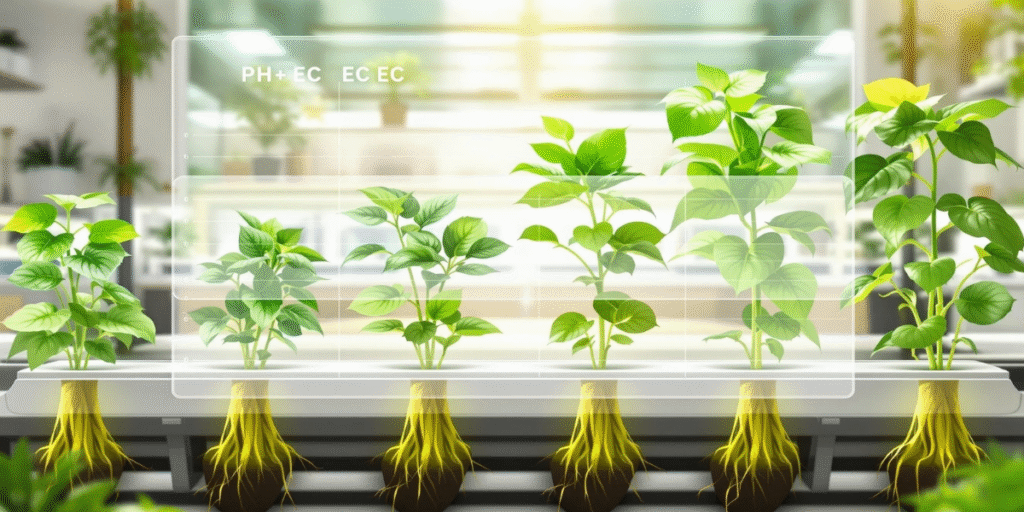
Ideal EC and pH for Lettuce, Tomatoes, and Strawberries
| Crop | Growth Stage | EC Range (mS/cm) | pH Range |
|---|---|---|---|
| Lettuce | Vegetative | 0.8 – 1.2 | 5.5 – 6.2 |
| Tomato | Vegetative | 2.0 – 2.5 | 5.8 – 6.3 |
| Tomato | Fruiting | 2.5 – 3.5 | 5.8 – 6.3 |
| Strawberry | Vegetative | 1.4 – 1.8 | 5.5 – 6.2 |
| Strawberry | Fruiting | 1.8 – 2.2 | 5.5 – 6.2 |
| Pepper | Vegetative | 2.0 – 2.5 | 5.8 – 6.5 |
| Pepper | Fruiting | 2.5 – 3.5 | 5.8 – 6.5 |
Common Hydroponic Plant Problems Linked to EC and pH
| Plant Symptom | Possible Cause | Related Factor |
|---|---|---|
| Yellowing new leaves | Iron unavailable | High pH |
| Leaf edges turning brown | Nutrient burn | High EC |
| Pale overall color | Nutrient deficiency | Low EC |
| Poor root growth | Phosphorus lockout | Low pH |
| Weak stems | Potassium unavailable | High or unstable pH |
This diagnostic chart helps growers quickly identify whether EC or pH is the likely cause of visible plant stress.
How Water Temperature Affects pH and EC in Hydroponics
One little secret many beginners overlook is that water temperature can quietly make or break your hydroponic setup. The warmer the water, the less dissolved oxygen it holds, and healthy roots absolutely need that oxygen. When the water gets too hot, roots can become stressed, nutrient uptake slows down, and even pH can start bouncing around unpredictably. It is like trying to breathe in a stuffy room you just cannot perform at your best.
Keeping water in a comfortable range, usually around 18 to 22 degrees Celsius, helps roots breathe easily, maintains nutrient balance, and supports steady hydroponic growth. You will notice that plants grown in well-controlled temperatures are more vibrant, leaves stay lush, and flowers or fruits develop beautifully, improving crop yield and overall hydroponic plant health.
Another thing to keep in mind is TDS or Total Dissolved Solids. It is closely related to EC and provides another way to gauge how nutrient-rich your water is. Temperature changes can subtly affect both EC and TDS readings, so paying attention to water temperature helps with precise adjustments, water parameter management, and overall hydroponic system maintenance. If you want to take a deeper dive into managing hydroponic water quality and making sure your nutrients, pH, and dissolved oxygen stay balanced, check out our full guide on water quality in hydroponics which covers everything from dissolved oxygen to nutrient balance.
Once you get used to monitoring water temperature along with EC and pH, it feels a bit like unlocking a secret in hydroponics. Your roots stay strong, dissolved oxygen levels remain balanced, and your plants reward you with healthy, steady growth, making all the effort completely worth it.
Daily Hydroponic Maintenance Tips for Stable pH and EC
Two or three times a week, make it a habit to grab your EC and pH meters and take a reading. This might sound a bit technical at first, but once you get into the rhythm, it becomes second nature, and you’ll start noticing little patterns that tell you exactly what your plants need. If you don’t have a meter yet, using a reliable pH and EC tester from Greenfuturehydro makes this step super simple and accurate. It takes the guesswork out of monitoring your nutrient solution and gives you confidence that your plants are getting exactly what they need.
Write down the numbers in a notebook, on your phone, or even use a simple chart to track changes over time. You’ll start spotting trends, like which crops need a little extra nutrient boost or when the pH drifts naturally as your plants grow. This practice is not just about numbers,it’s about understanding your plants and giving them exactly what they want for healthy root development, strong plant nutrient absorption, and vibrant hydroponic growth.
Using a good meter consistently also helps with overall water parameter management. You’ll notice that your hydroponic water quality stays more stable, your plants look greener, and even subtle issues like dissolved oxygen fluctuations become easier to catch before they turn into problems. If you want to dive deeper into all aspects of hydroponic water quality, including dissolved oxygen, nutrient balance, and tips for healthier crops, check out our full guide. It’s a great resource to complement your EC and pH monitoring routine and really helps you feel in control of your hydroponic garden.
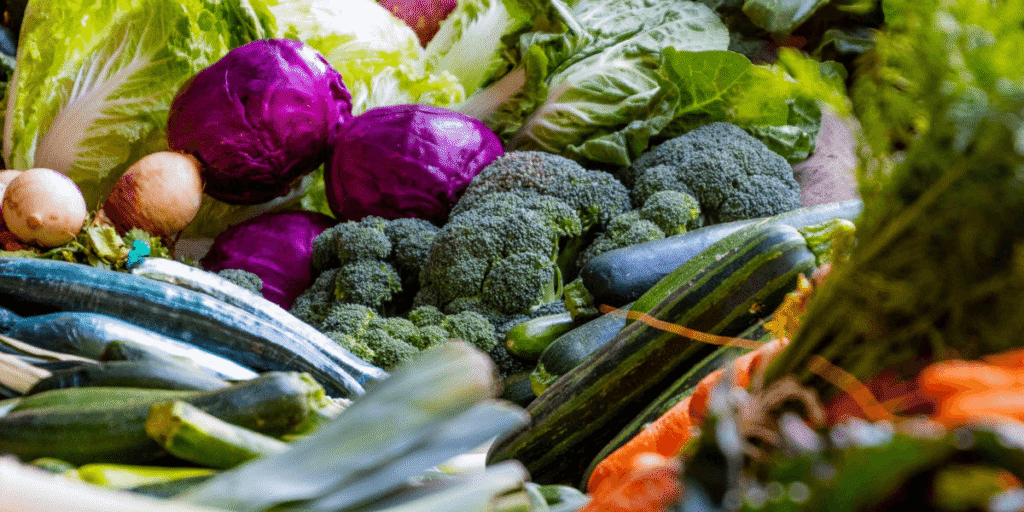
Q&A: Most Common Grower Questions on Hydroponic pH and EC
Q1: My leaves are turning yellow even though I’m adding nutrients. What’s going on?
A: This usually happens when pH or EC is off. Even if the nutrients are there, your plants can’t absorb them properly if the pH is too high or too low. Check your readings first, and you’ll probably find the culprit.
Q2: How often should I really check EC and pH?
A: At least twice a week, but honestly, checking a little more often in the beginning helps you get a feel for your plants. You’ll start noticing patterns and small changes before they turn into big problems.
Q3: Sometimes my pH drifts even after adjustment. Is that normal?
A: Totally. Plants naturally take up different nutrients at different rates, water temperature changes, and even microbes in the system can affect pH. The trick is to monitor consistently and make small corrections rather than overdoing it.
Q4: Can I just eyeball it instead of using meters?
A: You could, but meters are a game-changer. They give you confidence that your plants are getting exactly what they need, and they save a lot of guesswork and stress in the long run. Think of it like having a little secret superpower for your hydroponic garden.
Q5: My EC or pH seems fine but growth is slow. What else should I check?
A: Don’t forget water temperature and dissolved oxygen. Even perfect EC and pH can’t fully help roots if the water is too warm or oxygen levels are low. A healthy root environment is just as important as nutrient balance.
Conclusion: Mastering pH and EC Levels in Hydroponic for Thriving Plants
If there’s one thing to remember from this guide, it’s that pH and EC are the true backbone of a thriving hydroponic garden. Getting these water parameters right is like giving your plants the perfect environment to flourish. When nutrient solutions are balanced, roots are healthy, and hydroponic water quality is just right, you’ll see lush leaves, strong hydroponic growth, and bountiful hydroponic crop yield.
But it’s not just about pH and EC. Paying attention to water temperature, making sure roots get enough dissolved oxygen, and keeping up with simple hydroponic system maintenance are what really make the difference. Over time, you’ll start noticing subtle cues from your plants that tell you exactly what they need. Adjusting nutrient solutions and monitoring water parameter management becomes second nature, and your plants respond beautifully.
Hydroponics might feel technical at first, but once you understand these key pillars, it becomes incredibly rewarding. Seeing your plants thrive, knowing that your care directly affects their health, and building confidence in managing hydroponic plant health makes the whole process satisfying and almost magical.
Call to Action: Take Charge of Your Hydroponic Water Quality
If you’re just starting out with hydroponics, the first thing to fall in love with is paying attention to your plants’ water. Keeping your pH and EC in check might sound technical at first, but trust me, it quickly becomes one of the most satisfying parts of growing. You will start noticing little changes, like greener leaves, stronger roots, and healthier flowers, and it feels amazing to see your care actually making a difference.
Greenfuturehydro is here to make it simple and fun. From handy pH and EC meters to nutrient kits and dissolved oxygen testers, we’ve got all the tools you need to keep your hydroponic system happy and balanced.
And the best part is you’re not alone. Whenever you have a question or just want a tip, you can reach out to us at info@greenfuturehydro.com or call +86 13487543942. We love helping fellow growers see their plants thrive.
For daily inspiration, tutorials, and a community of hydroponic enthusiasts, follow us on Instagram at @Greenfuturehydro. Let’s make sure your plants grow healthy, strong, and full of life while you enjoy every moment of the journey.
Related Articles on Hydroponic Water, Nutrients, and Plant Growth
- How to Control Pests in Hydroponics
- How to Troubleshoot Common Hydroponic Issues
- How to Prevent Algae Growth in Hydroponic Systems
- 9 Common Mistakes to Avoid in Hydroponic Gardening
- Guide to Growing Hydroponic Plants in Bulk
- From Seed to Table: “Greenfuturehydro” Hydroponic Vegetable Journey
- Hydroponic System Maintenance: Tips and Tricks
- The Basics of Hydroponic Plant Care
